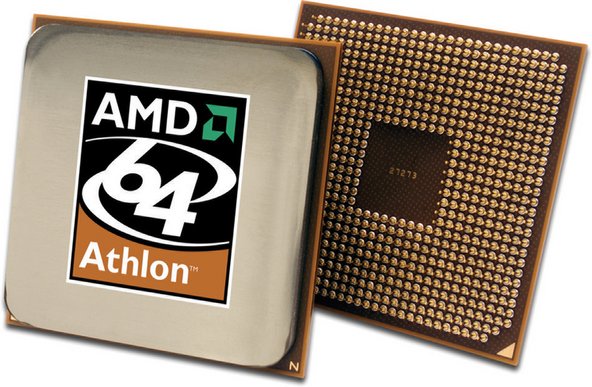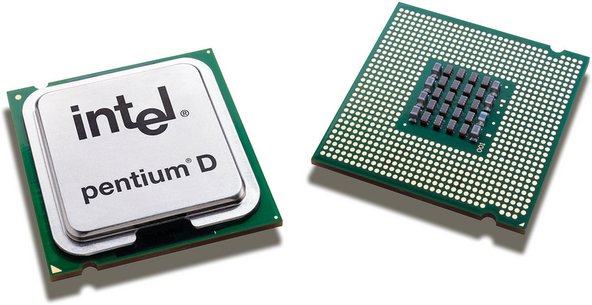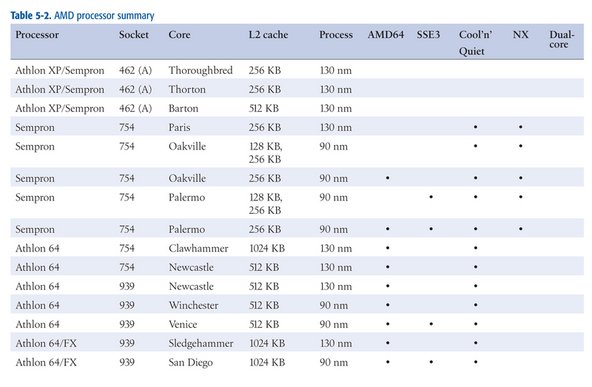
WHAT IS A COMPUTER PROCESSOR
A processor, or “microprocessor,” is a small chip that resides in computers and other electronic devices. Its basic job is to receive input and provide the appropriate output. While this may seem like a simple task, modern processors can handle trillions of calculations per second.
A central processing unit, also called a central processor, main processor or just processor, is the electronic circuitry within a computer that executes instructions that make up a computer program
A processor is an integrated electronic circuit that performs the calculations that run a computer. A processor performs arithmetical, logical, input/output (I/O) and other basic instructions that are passed from an operating system (OS). Most other processes are dependent on the operations of a processor.
The terms processor, central processing unit (CPU) and microprocessor are commonly linked as synonyms. Most people use the word “processor” interchangeably with the term “CPU” nowadays, it is technically not correct since the CPU is just one of the processors inside a personal computer (PC).
The Graphics Processing Unit (GPU) is another processor, and even some hard drives are technically capable of performing some processing.https://8c560f714a3ec2733478166727b5684f.safeframe.googlesyndication.com/safeframe/1-0-37/html/container.html
Processors can be identified by two main parameters: how wide they are and how fast they are. The speed of a processor is a fairly simple concept. Speed is counted in megahertz (MHz), which means millions of cycles per second—and faster is better! The width of a processor is a little more complicated to discuss because there are three main specifications in a processor that are expressed in width. They are
- Internal registers
- Data input and output bus
- Memory address bus
Systems below 16MHz usually had no cache memory at all. Starting with 16MHz systems, high-speed cache memory appeared on the motherboard because the main memory at the time could not run at 16MHz. Prior to the 486 processor, the cache on the motherboard was the only cache used in the system.
Starting with the 486 series, processors began including what was called L1 (Level 1) cache directly on the processor die. This meant that the L1 cache always ran at the full speed of the chip, especially important when the later 486 chips began to run at speeds higher than the motherboards they were plugged into. During this time the cache on the motherboard was called the second level or L2 cache, which ran at the slower motherboard speed.
Starting with the Pentium Pro and Pentium II, Intel began including L2 cache memory chips directly within the same package as the main processor. Originally this built-in L2 cache was implemented as physically separate chips contained within the processor package but not a part of the processor die. Since the speed of commercially available cache memory chips could not keep pace with the main processor, most of the L2 cache in these processors ran at one-half speed (Pentium II/III and AMD Athlon), while some ran the cache even slower, at two-fifths or even one-third the processor speed (AMD Athlon).
The original Pentium II, III, Celeron, and Athlon (Model 1 and 2) processors use 512KB of either one-half, two-fifths, or one-third speed L2 cache as Table 3.1 shows:
TYPES OF PROCESSORS
AMD Sempron
The various models of the AMD Sempron processor sell in the $50 to $125 range, and are targeted at the budget through low-end mainstream segment. The Sempron replaced the discontinued Socket A Duron processor in 2004, and the obsolescent Socket A Athlon XP processor in 2005. Various Sempron models are available in the obsolescent Socket A and in the same Socket 754 used by some Athlon 64 models.
AMD actually packages two different processors under the Sempron name. A Socket A Sempron, also called a K7 Sempron, is in fact a re-badged Athlon XP processor. A Socket 754 Sempron, shown in Figure 5-1 is also called a K8 Sempron, and is really a cut-down Athlon 64 model running at a lower clock speed with a smaller L2 cache and a single-channel memory controller rather than the dual-channel memory controller of the Athlon 64. Early Sempron models had no support for 64-bit processing. Recent Sempron models include 64-bit support, although the practicality of running 64bit software on a Sempron is questionable. Still, like the Athlon 64, the Sempron also runs 32-bit software very efficiently, so you can think of the 64-bit support as future-proofing.
Figure 5-1: AMD Sempron processor (image courtesy of AMD, Inc.)
If you have a Socket 462 (A) or Socket 754 motherboard in your system, the Sempron offers an excellent upgrade path. You’ll need to verify compatibility of your motherboard with the specific Sempron you intend to install, and you may need to upgrade the BIOS to recognize the Sempron.
Mainstream processors
Mainstream processors typically cost $125 to $250 although the fastest models sell for $500 or more and offer anything up to about twice the overall performance of the slowest budget processors. A mainstream processor may be a good upgrade choice if you need more performance than a budget processor offers and are willing to pay the additional cost.
However, depending on your motherboard, a mainstream processor may not be an option even if you are willing to pay the extra cost. Mainstream processors consume considerably more power than most budget processors, often too much to be used on older motherboards. Also, mainstream processors often use more recent cores, larger L2 caches, and other features that may or may not be compatible with an older motherboard. An older power supply may not provide enough power for a current mainstream processor, and the new processor may require faster memory than is currently installed. If you intend to upgrade to a mainstream processor, carefully verify compatibility of the processor, motherboard, power supply, and memory before you buy the processor.
Intel Celeron
For many years, the Intel Celeron processor was the poor stepsister, offering too little performance at too high a price. Cynical observers believed that the only reason Intel sold any Celeron processors at all was that system makers wanted the Intel name on their boxes without having to pay the higher price for an Intel mainstream processor.
That all changed when Intel introduced their Celeron D models, which are now available for Socket 478 and Socket 775 motherboards. While Celeron D models are still slower than Semprons dollar-for-dollar, the disparity is nowhere near as large as in years past. Celeron D processors, which sell in the $60 to $125 range, are very credible upgrade processors for anyone who owns a Socket 478 or Socket 775 motherboard. Like the Sempron, Celeron models are available with 64-bit support, although again the practicality of running 64-bit software on an entry-level processor is questionable. Once again, it’s important to verify the compatibility of your motherboard with the specific Celeron you intend to install, and you may need to upgrade the BIOS to recognize the Celeron.
Caution
AVOID NON-D CELERON PROCESSORS
Celeron processors (without the “D”) are based on the Northwood core and have only 128 KB of L2 cache. These processors have very poor performance, and unfortunately remain available for sale. The Celeron D models are based on the Prescott-core, and have 256 KB of L2 cache.
AMD Athlon 64
The AMD Athlon 64 processor, shown in Figure 5-2, is available in Socket 754 and Socket 939 variants. As its name indicates, the Athlon 64 supports 64-bit software, although only a tiny percentage of Athlon 64 owners run 64-bit software. Fortunately, the Athlon 64 is equally at home running the 32-bit operating systems and applications software that most of us use.
Figure 5-2: AMD Athlon 64 processor (image courtesy of AMD, Inc.)
Like the Sempron, the Athlon 64 has a memory controller built onto the processor die, rather than depending on a memory controller that’s part of the chipset. The upside of this design decision is that Athlon 64 memory performance is excellent. The downside is that supporting a new type of memory, such as DDR2, requires a processor redesign. Socket 754 models have a single-channel PC3200 DDR-SDRAM memory controller versus the dual-channel controller in Socket 939 models, so Socket 939 models running at the same clock speed and with the same size L2 cache offer somewhat higher performance. For example, AMD designates a Socket 754 Newcastle-core Athlon 64 with 512 KB of L2 cache running at 2.2 GHz a 3200+ model, while the same processor in Socket 939 is designated an Athlon 64 3400+.
NUMBERS LIE
The model numbers of Athlon 64 and Sempron processors are scaled differently. For example, the Socket 754 Sempron 3100+ runs at 1800 MHz and has 256 KB of cache, and the Socket 754 Athlon 64 2800+ runs at the same clock speed and has twice as much cache. Despite the lower model number, the Athlon 64 2800+ is somewhat faster than the Sempron 3100+. Although AMD hotly denies it, most industry observers believe that AMD intends Athlon 64 model numbers to be compared with Pentium 4 clock speeds and Sempron model numbers with Celeron clock speeds. Of course, Intel also designates their recent processors by model number rather than clock speed, confusing matters even further.
Intel Pentium 4
The Pentium 4, shown in Figure 5-3, is Intel’s flagship processor, and is available in Socket 478 and Socket 775. Unlike AMD which sometimes uses the same Athlon 64 model number to designate four or more different processors with different clock speeds, L2 cache sizes, and sockets Intel uses a numbering scheme that identifies each model unambiguously.
Older Pentium 4 models, which are available only in Socket 478, are identified by clock speed and sometimes a supplemental letter to indicate FSB speed and/or core type. For example, a Socket 478 Northwood-core Pentium 4 processor operating at a core speed of 2.8 GHz with the 400 MHz FSB is designated a Pentium 4/2.8. The same processor with the 533 MHz FSB is designated a Pentium 4/2.8B, and with the 800 MHz FSB it’s designated a Pentium 4/2.8C. A 2.8 GHz Prescott-core Pentium 4 processor is designated a Pentium 4/2.8E.Figure 5-3: Intel Pentium 4 600 series processor (image courtesy of Intel Corporation)
Socket 775 Pentium 4 models belong to one of two series. All 500-series processors use the Prescott-core and have 1 MB of L2 cache. All 600-series processors use the Prescott 2M core and have 2 MB of L2 cache. Intel uses the second number of the model number to indicate relative clock speed. For example, a Pentium 4/530 has a clock speed of 3 GHz, as does a Pentium 4/630. The 540/640 models run at 3.2 GHz, the 550/650 models at 3.4 GHz, the 560/660 models at 3.6 GHz, and so on. A “J” following a 500-series model number (for example, 560J) indicates that the processor supports the XDB feature, but not EM64T 64-bit support. If a 500-series model number ends in 1 (for example, 571) that model supports both the XDB feature and EM64T 64-bit processing. All 600-series processors support both XDB and EM64T.
Dual-core processors
By early 2005, AMD and Intel had both pushed their processor cores to about the fastest possible speeds, and it had become clear that the only practical way to increase processor performance significantly was to use two processors. Although it’s possible to build systems with two physical processors, doing that introduces many complexities, not least a doubling of the already-high power consumption and heat production. AMD, later followed by Intel, chose to go dual-core.
Combining two cores in one processor isn’t exactly the same thing as doubling the speed of one processor. For one thing, there is overhead involved in managing the two cores that doesn’t exist for a single processor. Also, in a single-tasking environment, a program thread runs no faster on a dual-core processor than it would on a single-core processor, so doubling the number of cores by no means doubles application performance. But in a multitasking environment, where many programs and their threads are competing for processor time, the availability of a second processor core means that one thread can run on one core while a second thread runs on the second core.
The upshot is that a dual-core processor typically provides 25% to 75% higher performance than a similar single-core processor if you multitask heavily. Dual-core performance for a single application is essentially unchanged unless the application is designed to support threading, which many processor-intensive applications are. (For example, a web browser uses threading to keep the user interface responsive even when it’s performing a network operation.) Even if you were running only unthreaded applications, though, you’d see some performance benefit from a dual-core processor. This is true because an operating system, such as Windows XP, that supports dual-core processors automatically allocates different processes to each core.
AMD Athlon 64 X2
The AMD Athlon 64 X2, shown in Figure 5-4, has several things going for it, including high performance, relatively low power requirements and heat production, and compatibility with most existing Socket 939 motherboards. Alas, while Intel has priced its least expensive dual-core processors in the sub-$250 range, the least expensive AMD dual-core models initially sold in the $800 range, which is out of the question for most upgraders. Fortunately, by late 2005 AMD had begun to ship more reasonably priced dual-core models, although availability is limited.
Figure 5-4: AMD Athlon 64 X2 processor (image courtesy of AMD, Inc.)
Intel Pentium D
The announcement of AMD’s Athlon 64 X2 dual-core processor caught Intel unprepared. Under the gun, Intel took a cruder approach to making a dual-core processor. Rather than build an integrated dual-core processor as AMD had with its Athlon 64 X2 processors, Intel essentially slapped two slower Pentium 4 cores on one substrate and called it the Pentium D dual-core processor.
The 800-series 90 nm Smithfield-core Pentium D, shown in Figure 5-5, is a stop-gap kludge for Intel, designed to counter the AMD Athlon 64 X2 until Intel can bring to market its real answer, the dual-core 65 nm Presler-core processor, which is likely to be designated the 900-series Pentium D. The Presler-based dual-core processors will be fully integrated, compatible with existing dual-core Intel-compatible motherboards, and feature reduced power consumption, lower heat output, twice as much L2 cache, and considerably higher performance.
Figure 5-5: Intel Pentium D dual-core processor (image courtesy of Intel Corporation)
Reading the foregoing, you might think we had only contempt for the 800-series Pentium D processors. In fact, nothing could be further from the truth. They’re a kludge, yes, but they’re a reasonably cheap, very effective kludge, assuming that you have a motherboard that supports them. We extensively tested an early sample of the least expensive 800-series Pentium D, the 820. The 820 runs at 2.8 GHz, and under light, mostly single-tasking use, the 820 “feels” pretty much like a 2.8 GHz Prescott-core Pentium 4. As we added more and more processes, the difference became clear. Instead of bogging down, as the single-core Prescott would have done, the Pentium D provided snappy response to the foreground process.
We still have intel dual core,core2,corei3,quard core,corei5,corei7 and corei9 all these intel core processors,perform their tasks according to their numbers ie core i9 performs faster than other core processors
AMD and Intel processor summaries
Table 5-2 lists the important characteristics of current AMD processors, including the special features they support.
Table 5-2: Table 5-2. AMD processor summary
Table 5-3 lists the important characteristics of current Intel processors, including the special features they support.
Table 5-3: Intel processor summary
SPECIAL FEATURES
Special features are not always implemented across an entire line of processors. For example, we list the Pentium D 8XX-series processors as supporting EM64T, SSE3, EIST, and dual core. At the time we wrote this, three Pentium D 8XX models were available: the 2.8 GHz 820, the 3.0 GHz 830, and the 3.2 GHz 840. The 830 and 840 models support all of the special features listed. The 820 model supports EM64T, SSE3, and dual-core operation, but not EIST. If a special feature listed as being supported by a particular line of processors is important to you, verify that it is supported in the exact processor model you intend to buy.
Difference between Snapdragon and MediaTek
Battery life
Snapdragon chipset offers better battery performance than MediaTek chipsets. MediaTek chipsets consume more power and cause shorter battery life because they offer more cores.
More cores mean more battery consumption, which causes more heat.
Warm-up problems
When it comes to heating problems, all processors provide heat, but MediaTek processors provide more heat than Snapdragon or other processors.
Performance
There is no comparison between the performance of these two processors because MediaTek focuses on the budget segment, while the Snapdragon processor is very efficient in multitasking.
GPU
The Graphic processor (GPU) is Qualcomm’s biggest advantage over its MediaTek counterparts. Qualcomm produces its graphics chip using Adreno Graphics technology, its secret weapons, and MediaTek using GPU Arm Mali. The difference in graphics can be seen on premium smartphones.
Drop your comment.





